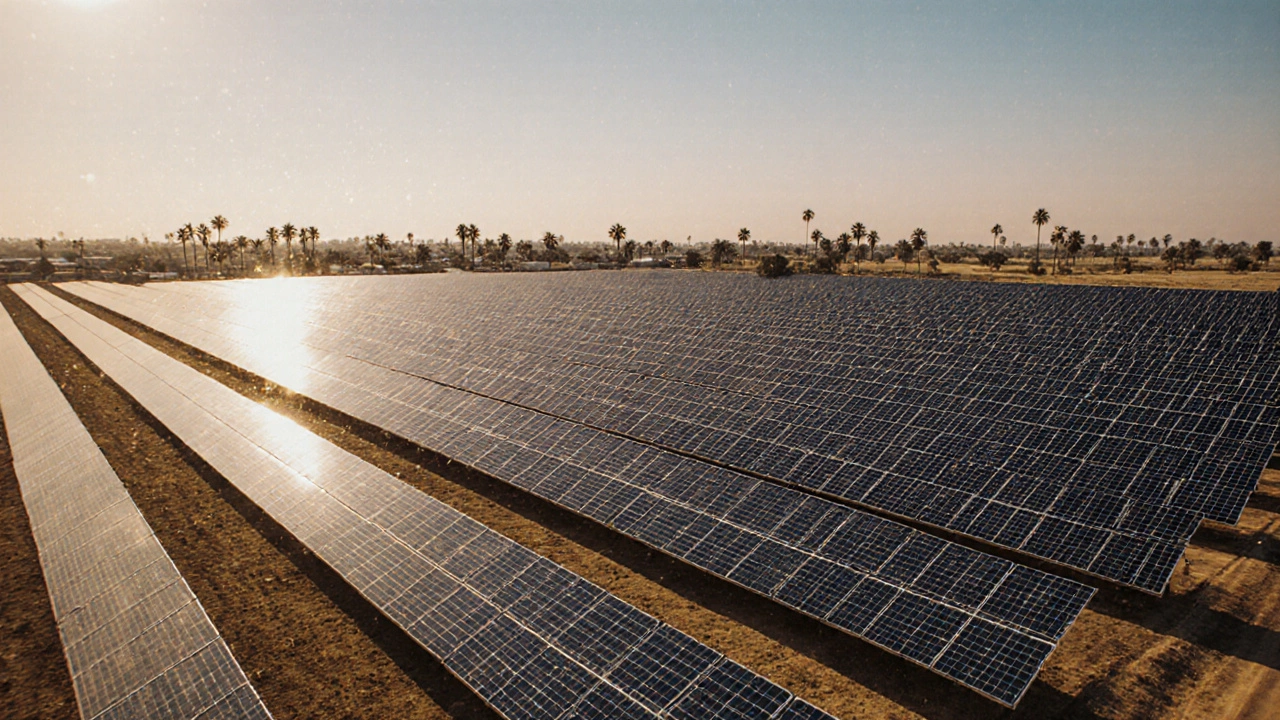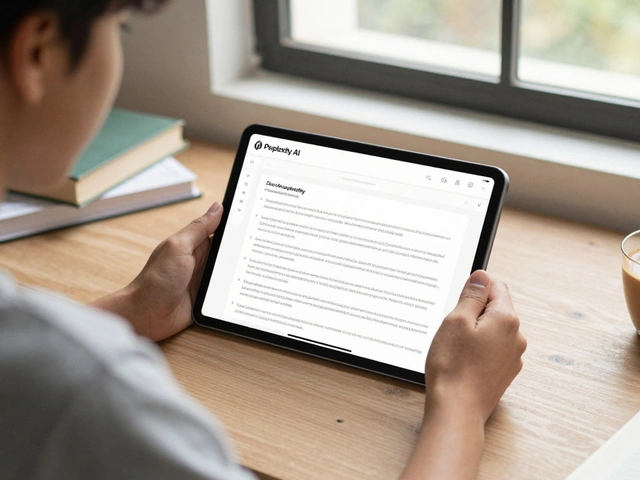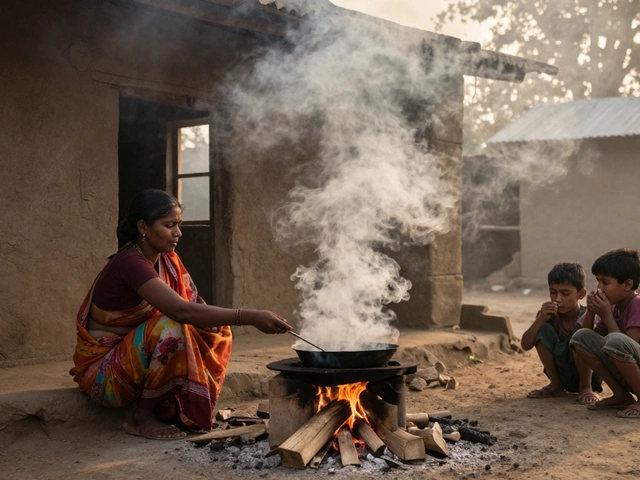Solar Savings Calculator
How Much Can You Save with Solar?
Calculate your potential savings by entering your electricity details. Solar is now cheaper than grid power in many regions.
Your Annual Savings
$0
Payback Period
0 years
Typically 3-7 years based on location and incentives
Your Energy Profile
Annual Solar Production:
0 kWh
Grid Electricity Cost:
$0.15/kWh
Did you know? In 2024, solar energy added 330 GW of capacity globally—more than all other energy sources combined. Solar panels are now cheaper than coal in many regions.
When you hear the words solar energy, you might think of rooftop panels or desert farms of shiny blue panels. But what if I told you that solar power isn’t just growing-it’s exploding? In 2024, the world added more solar capacity than every other energy source combined-coal, natural gas, wind, nuclear, you name it. And it’s not slowing down. Solar is now the fastest growing energy source on the planet, and the numbers don’t lie.
Solar Energy Is Outpacing Everything Else
In 2023, the International Energy Agency (IEA) reported that global solar photovoltaic (PV) capacity jumped by 270 gigawatts (GW). That’s more than the entire electricity generating capacity of Germany. In 2024, it hit 330 GW. By mid-2025, the world had added over 1,200 GW of solar capacity since 2020. To put that in perspective, that’s enough to power every home in the United States, India, and Brazil combined.
Wind power, often seen as the other clean energy superstar, added about 110 GW in 2024. Hydropower? Less than 20 GW. Even batteries-the critical companion to renewables-grew by 150 GW in storage capacity, but they’re not energy sources themselves. They store what solar and wind produce. Solar is the engine.
Why? Because solar panels got cheaper, faster, and smarter. Ten years ago, a typical residential solar system cost over $30,000. Today, it’s under $12,000 after incentives. In India, Brazil, and parts of Southeast Asia, solar is now the cheapest electricity ever produced. Not just cheaper than coal-it’s cheaper than building new coal plants. That’s not a trend. That’s a revolution.
What’s Driving the Surge?
It’s not one thing. It’s a perfect storm of technology, policy, and economics.
First, efficiency. Solar panels that were 15% efficient in 2015 now routinely hit 23%. Some lab models hit 47%. That means more power from the same roof. Second, manufacturing. China produces 80% of the world’s solar panels, and its factories churn out modules at a rate of one every second. The cost per watt has dropped by 90% since 2010.
Third, policy. The U.S. Inflation Reduction Act poured $370 billion into clean energy. The EU’s REPowerEU plan fast-tracked solar permits. India launched the Production Linked Incentive scheme to make its own panels. Even oil-rich countries like Saudi Arabia and the UAE are betting billions on solar farms.
And then there’s the grid. Smart inverters, AI-powered load balancing, and floating solar on reservoirs are solving the old problems-intermittency and land use. In Karnataka, India, floating solar plants on reservoirs now generate over 1,000 MW without taking up farmland. In California, homes with solar and batteries are selling for 5% more. People aren’t just installing solar-they’re banking on it.
It’s Not Just About Big Projects
The biggest myth about solar is that it’s only for utilities and corporations. It’s not. In 2024, over 40% of new solar installations were small-scale: rooftops, carports, community gardens, even solar-powered water pumps in rural villages.
In Bangladesh, over 6 million homes now have solar home systems thanks to microfinance programs. In Kenya, pay-as-you-go solar lets families pay $2 a week for lighting and phone charging-no grid connection needed. In Mexico, farmers are installing solar panels above their crops, creating shade while generating income. This isn’t fringe tech. It’s everyday infrastructure.
And it’s scalable. A single 5-kW rooftop system can cut a household’s electricity bill by 80%. In Bangalore, where electricity costs over ₹10 per unit, a typical solar setup pays for itself in under 4 years. After that, it’s free power for 20+ years. That’s not a luxury. That’s financial freedom.
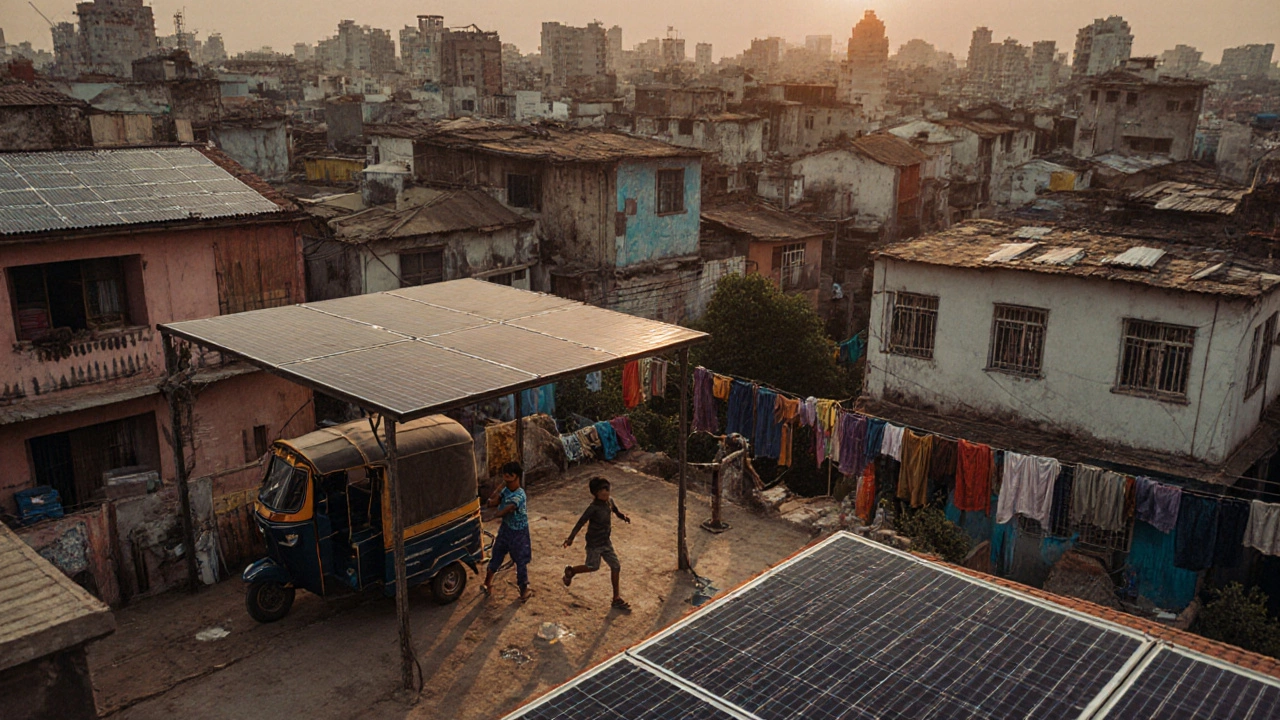
Why Not Wind or Hydropower?
Wind is growing too, but it’s hitting limits. Offshore wind is expensive. Onshore wind needs vast open spaces and faces strong local opposition. Hydropower? Most big dams are already built. New ones face environmental lawsuits and displacement issues. In India, large hydropower projects now take 10-15 years to clear permits.
Solar doesn’t need that. A solar farm can be built in 6-12 months. Rooftop panels? A crew can install them in a day. No massive excavation. No river diversion. No endangered species relocation. Just panels, a few wires, and a smart meter.
And unlike wind, solar works almost anywhere. Cities, suburbs, deserts, rooftops, parking lots, even the side of highways. You can’t put a wind turbine on your apartment balcony. But you can put solar on your balcony, your garage, your shed.
The Hidden Winner: Storage
Solar’s growth isn’t happening alone. It’s riding the wave of battery tech. Lithium-ion prices have dropped 90% since 2010. In 2025, a 10-kWh home battery costs less than ₹60,000 in India. That’s enough to keep your lights on during a blackout or sell power back to the grid during peak hours.
Companies like Tesla, LG, and Indian startups like Olectra and Exicom are making batteries cheaper, safer, and longer-lasting. New solid-state batteries are coming. Sodium-ion batteries-made from abundant salt-are already being tested in India and China. These aren’t futuristic ideas. They’re in showrooms today.
Solar + storage is becoming the new standard. In Australia, over 30% of homes have both. In Texas, during the 2024 heatwave, neighborhoods with solar and batteries kept their AC running while the grid failed. That’s resilience. That’s the future.
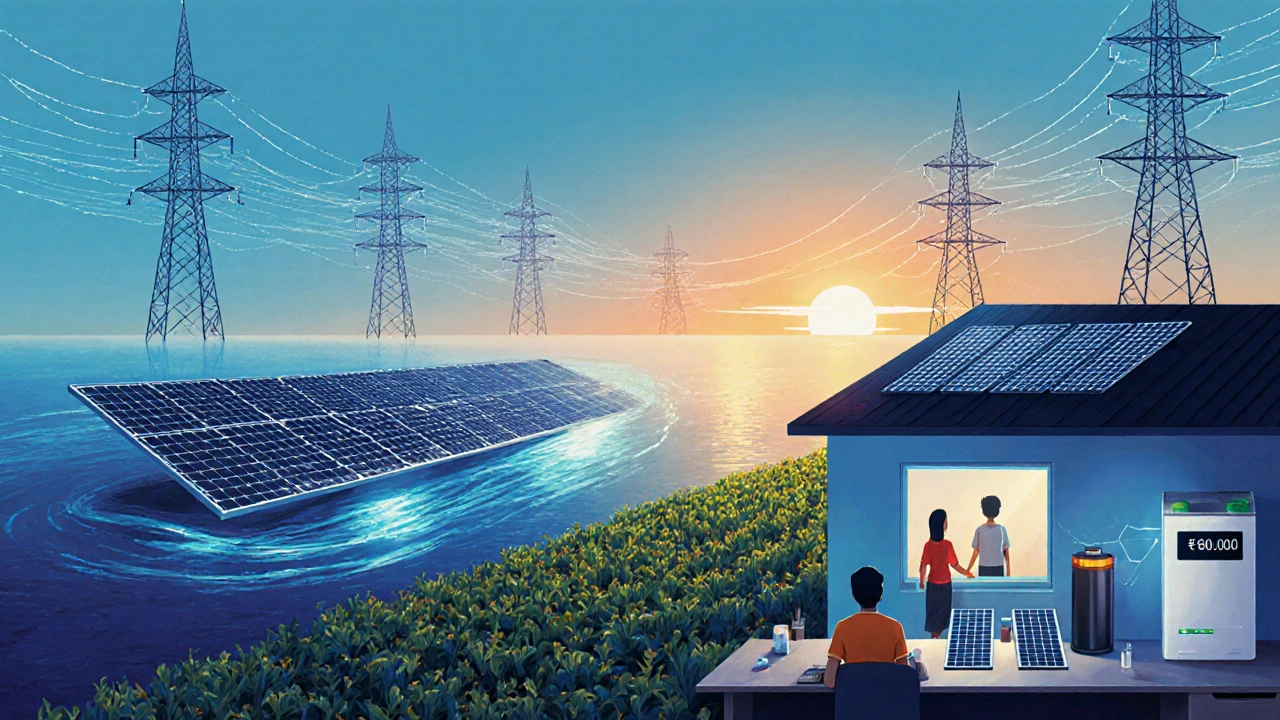
What’s Next?
By 2030, solar is projected to supply over 30% of global electricity. In some countries, it’ll hit 50%. India aims for 500 GW of non-fossil capacity by 2030-solar will make up 70% of that. The U.S. targets 1,000 GW. The EU wants 1,200 GW.
And the innovation isn’t stopping. Perovskite solar cells promise higher efficiency at half the cost. Bifacial panels capture sunlight from both sides. Agrivoltaics blend farming and solar. Solar windows are being tested in skyscrapers. Even solar paint is in early trials.
The energy transition isn’t a slow march. It’s a sprint. And solar is the athlete crossing the finish line first.
What This Means for You
If you’re a homeowner, think about solar. Even if you rent, ask your landlord. If you’re a business owner, solar cuts your operating costs. If you’re in policy, it’s the easiest win for clean energy goals. If you’re just curious, watch what happens in your neighborhood. In the next five years, you’ll see more solar panels than gas stations.
This isn’t about saving the planet in some distant future. It’s about lowering your bill today. It’s about not being at the mercy of fuel price spikes. It’s about having power when the grid fails. Solar isn’t just the fastest growing energy source. It’s the most practical one.
Is solar energy really the fastest growing energy source?
Yes. In 2024, solar added 330 gigawatts of new capacity globally-more than wind, hydropower, nuclear, and fossil fuels combined. Since 2020, the world has added over 1,200 GW of solar power. No other energy source has grown this fast or at this scale.
Why is solar growing faster than wind?
Solar is easier to install, works in more places, and costs less. Wind needs large open areas and strong, consistent winds. Solar panels can go on rooftops, parking lots, and even farmland. Solar projects take months to build. Wind farms take years. Plus, solar panel prices have dropped 90% since 2010, while wind turbine costs have plateaued.
Can solar power replace coal and gas completely?
Not alone-but with batteries and smart grids, it can be the main source. Solar doesn’t produce power at night, but paired with storage, it can cover 80-90% of daily needs in sunny regions. In places like California and India, solar already meets peak demand during the day. With more storage and better grid management, fossil fuels can be phased out over the next 15-20 years.
Is solar affordable for average households?
Absolutely. In India, a 5-kW solar system costs under ₹3 lakh after subsidies and pays for itself in 3-5 years. After that, electricity is nearly free for 20+ years. Monthly savings of ₹1,500-₹3,000 add up fast. Many banks offer zero-down solar loans. Even renters can join community solar programs.
What’s holding solar back?
Grid infrastructure and policy delays. Many grids weren’t built for two-way power flow from millions of rooftop systems. Permitting can still take months in some cities. And in places without net metering, you can’t get paid for excess power. But these are solvable problems-and they’re being fixed fast.
